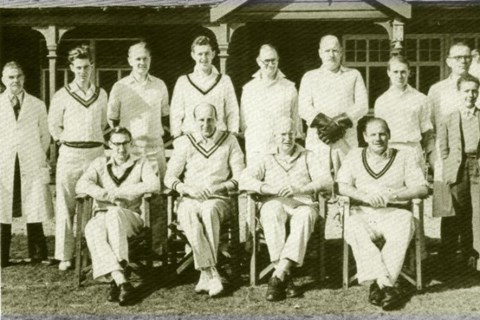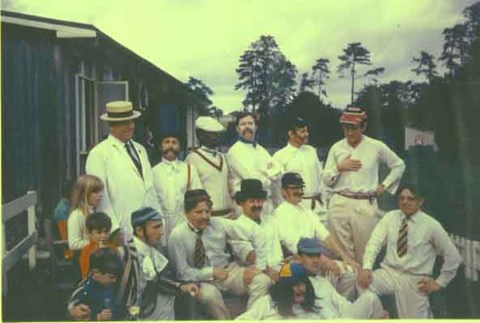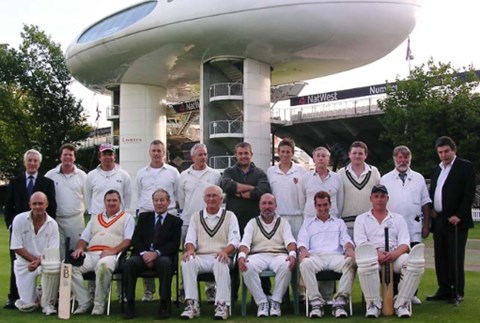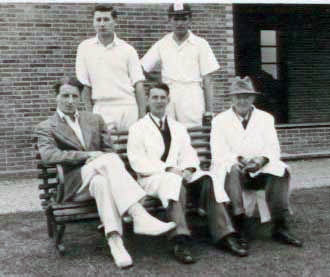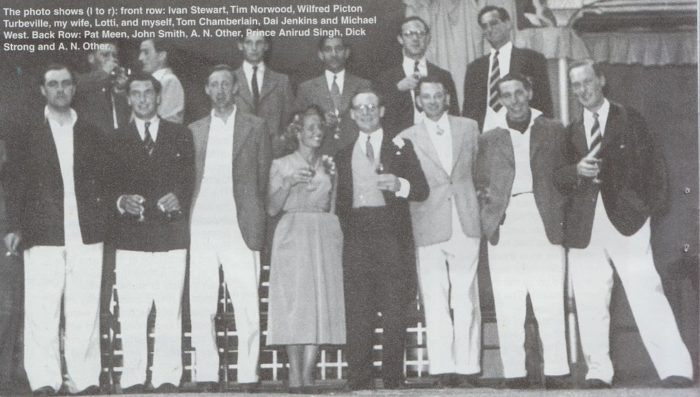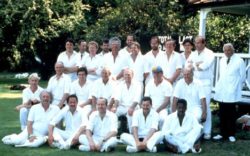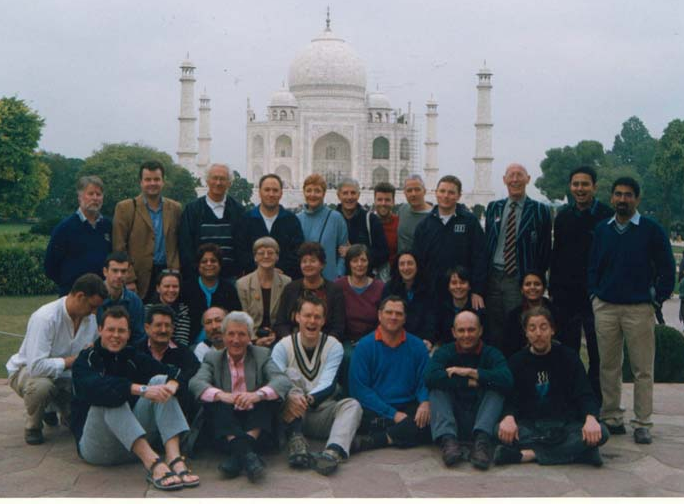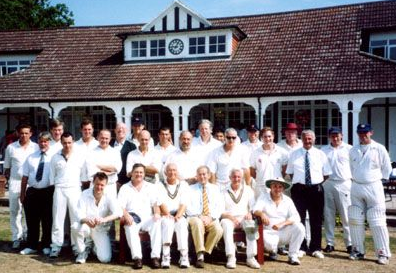Nomads Cricket Club was founded in the Autumn of 1903
Nomads Cricket Club was founded in 1903 as Hampstead Nomads. The first captain was Mr Albert Rose. Always a wandering club, with no connection to Hampstead C.C, the original members (seventeen) lived in Hampstead or St. John’s Wood and most of them had attended the former Peterborough Lodge Preparatory School. As a result the club quorum for the AGM was 17 and this became an onerous number to find once the AGM was split from the annual dinner in early 80s. The original members were mostly either graduates of Oxford or Cambridge Universities or members of the Architectural profession hence the club colours chosen were Oxford Blue, Cambridge Blue and Old Gold.Well that has been the received wisdom but in fact the current colours were adopted in 1910 according to the minute book when Mr A Howard Linford was President.
Until the modern era there was a long annual tour of Cambridge Colleges with many of the tour players recruited from the local hostelries by the industrious secretary Sidney Caulfield including many later famous cricketers.There was a long standing connection with the architectural profession.
By 1912 the club were playing 33 matches andin 1913, 42. Theskipper in those yearswas Mr H Browning. In 1912 Nomads played a touring team from Paris called Stade Francais at North Middlesex ground, an event captured in the pages of Sporting Life with caricatures of several Nomads players.In 1914 Mr HG Crawford was captain as War was declared.
The First World War accounted for over 50% of the club’s membership and resumption was delayed until 1922. The following year, 1923, the name Hampstead, now without meaning, was dropped. Sidney Caulfield played in the first game and he was the club’s secretary for half a century and then President and he was involved in the revival of the club after WW1.. He was a fine slow left arm bowler and then a very eccentric umpire. His memory is toasted at the club’s annual dinner or post season supper.
In the late1920s Prince Duleepsinhji played for Nomads. Hallam ‘Granny’ Alston played against Nomads and Duleep in the 1920’s in the Channel Islands. In 1925 CJT Poole having relinquished the captaincy of Northamptonshire CCC skippered Nomads and scored nearly 600 runs. Nomads played 54 matches that year and won 19 but the end of the decade the fixture list had reduced with only 23 matches played. This Fluctating pattern with fixtures was to continue in subsequent decades.
The club ‘s season was curtailed in 1939 and not resumed until 1946.Although the club struggled to rebuild its playing strength it was by the early 1950s playing as many as fifty matches.Hallam ‘Granny’ Alston joimed at thisperiod. In 1950 his first Nomads season he scored 1096 runs and took 115 wickets. and again in ‘Coronation and Ashes regained year of 1953 he celebrated with1136 runs and took 135 wickets.for thirty years for the clubHe was to play through the50s, 60s and 70s playing his last Nomads game in his mid seventies in 1983. ‘Granny’ (so called for predilection to drink tea rather than beer when on tour) took over 1,100 wickets and scored over 8,000 runs Also in the 50s Pat Mean scored a lot of runs at electric pace with prodigious power in his shots. In 1953 he hit 1175 runs.
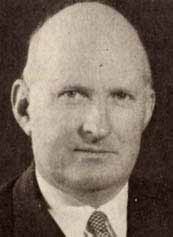
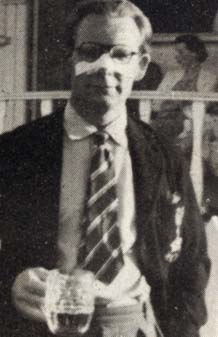
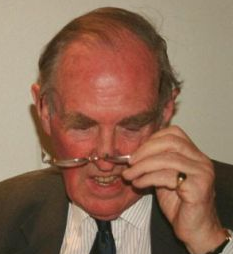
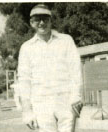
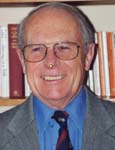
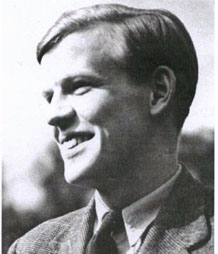
In 1953 the club celebrated its Golden Jubilee with a week of cricket at The Hurlingham Club in Fulham fully reported in the London Evening Press, a season of 77 matches played.
The 1960s proved to be a difficult time as Sidney passed on to another playing field and the fixture list steadily declined from fifty matches to half that number. However by the end of the decade a good number of new members had been recruited often by the energetic Colin Owen-Browne so that the 1970s witnessed a vigorous resurgence despite the development of League Cricket in the Home Counties. For the 1970 season a former Cambridge Heavy Weight Boxing Blue Ian Crombie was appointed club skipper on account of his light blue sweater which was supposed to put fear in the hearts of the opposition. This was the club’s last formal link with Oxford and Cambridge Universities, a link revived with a match at Fenners in Summer 2002. In 1979 Nomads played 77 matches in all cricket including a 3rd place in the MCC Indoor Cricket League and Tony Whiteway hit 1163 runs while Mike Wilkins took 90 wickets.
Much credit for Nomads success by the end of the 70s and early 1980s must be given to the club captain Mike Ghersie and then the two ‘Docs’, David Fermont and Mike Wilkins.In the late ‘70s Richard Kershaw introduced via the former Radbourne Motors off Holland Park Avenue a string of cricketers from Dominica, Stafford Etienne, Lennie and ‘Rasta’ Ernie Lecointe who played with great success. As a result the word Bacchanal as used in Dominica patois, has passed into Nomads language to greet an extravagantly played boundary shot. Stafford hit 1366 runs in 1983.
The nineties saw a steady reduction in fixtures although short tours to Belgium and France were undertaken. As a generation of Nomads aged and retired and then a bunch of Kiwis returned home or moved on so Nomads may have seemed to be quietely subsiding in line with the general reduction in ‘friendly or non competition’ cricket. However with the dawn of the new millenium and the looming centenary coming up the club instigated a resurgence. The impetus of that revival is still with us today.
On an individual basis both Tony Whiteway and Michael Blumberg have scored over 10,000 runs for the club, Tony Whiteway at much the more impressive average.In 1978Whiteway hit 1447 runs at an average of 90.43 believed to be the club record which remained for over 30 years. Sadly, Tony suffered a stroke, indeed several strokes in summer 1997 although he hit a 50 at Barnes CC between ‘strokes’,
In 1986 Tim Bourke, hit a record individual score for the Nomads, 176 not out, against Indian Gymkhana. The next highest is 171 by Andy Hill at Abinger in 2002,167 by James While at Hurlingham 2004 and again 162* by James in Spainthen 156 runs by Gerald Eiloart and 155 by Andy Brown. In 2015 Tom Brockton broke tim bourke’s record with 183 not out against Marlow Park. The club’s highest recent score was made in India 2003, 358 v Udaipur XI, in a match lost. The lowest since WW2 is 14 v Beaconsfield. The late Michael Penn who played reported that Nomads had reached 8 without loss before collapsing. In 1989 Nomads chased 318 to win at Brook in an afternoon match, James Drayton hitting several sixes in the final over.
In 1984 Michael Blumberg took 8-64 against Ditchling and in 1991 Roger Kinsella 8-17 against Hampshire Mercenaries but the best bowling figures were recorded in 1951 against Chelmsford-16.3-7-13-10 by Gareth Cruwys Williams. Michael Wilkins was the club’s most successful bowler through the late 70s and 80s. Blumberg, Wilkins, Tony Smiley, Tony Clark and the late Ossie Gooding have all taken over 60 wickets in a season as did FC Boully in 1912, 61 wickets at a mere 8.50. In 1932 LF Matthews took the last 3 wickets in the last over and in the next match took a hatrick. He had joined Nomads in 1912 and later became President of the club.
In the last decade two of our batsmen have hit eleven centuries for the club at the time of going to press, Paul Wakefield and James While. In the centenary year Andy Stokes hit 774 runs with five centuries and in 2004 Jemile Al-Darraji hit over 900 runs in the season with two innings of 150. In 2011 Tom Brockton broke Tony Whiteway’s long standing record of 1147 runs made in 1978 reaching a mighty 1555.He has subsequently scored over 1000 runs in 2012, 2013, 2014 and 2015.
Over the years the club has had many members from Australia, New Zealand, India and South Africa. Two of the club’s most successful captains in recent years have been Kiwis-Tim Bourke and Steve Hambleton. Before them John Nagenda from Uganda was a mercurial skipper and leading personality in the club and because of him many cricketers from East Africa have been members. Both he and Sam Walusimbi, another Nomad, played for East Africa in ICC World Cups. Their 1976 World Cup team colleague Ramesh Sethi hit a century for Nomads in 1993 in our 90th year cricket week.Playing in the 2003 ICC World Cup was Aravinda de Silva who played for Nomads as a teenager as did Ajay Jadeja another World Cup performer.
Jack Hyams was our oldest member playing in his 91st year. He died one year later. He had scored more runs ( over 121,000) than any other cricketer, ever ! He played his last match for Nomads in March 2011 in Spain.
Recently Nomads have encapsulated Virgin XI and Cricket World XI thus increasing fixtures and players. The club celebrated its centenary in 2003 including a tied match with MCC and three week tour to India.In 2005 the club beat Cross Arrows at Lord’s.
Since the centenary the club has sustained a fixture list in excess of fifty fixtures and undertaken many tours to Continental Europe and further afield such as East Africa and Goa, India.
In an era when League Cricket dominates the recreational game and ‘Wandering’ Cricket is somewhat of a forgotten sector Nomads nevertheless forge on providing good competitive amateur cricket played in the best spirit and with a matching social side. We play a lot of midweek cricket particularly in July and August and visit Continental Europe regularly. Our membership is a broad church in terms of age, race and wealth (or lack of it) and in addition we have some women cricketers as playing members.

